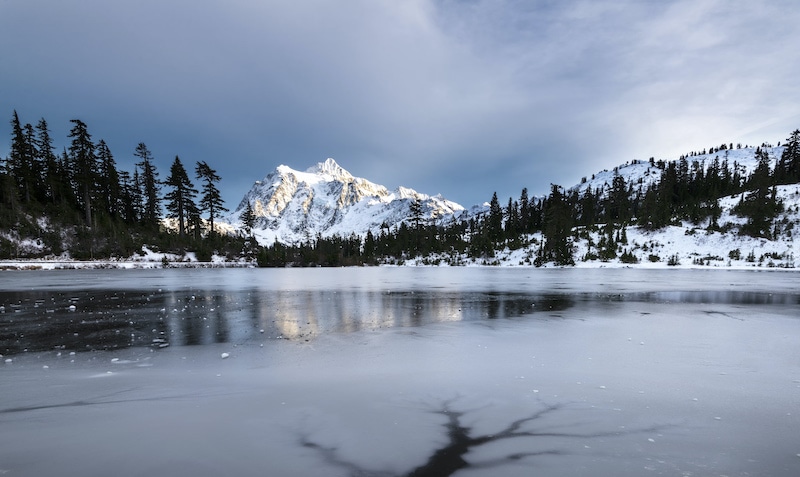Carbon-Free Heating Solutions 101

If you’re thinking about ways to decrease your family’s carbon footprint in Olympia, WA, you’re not alone. We hear about global environmental warming issues and climate change nearly every day, and we can all play a role in helping to take better care of our world. Our professionals at Pacific Air Heating & Air Conditioning want to help you understand what options you have to do just that.
The idea of carbon-free or non-fossil-fuel heating is a complex one. Often, the price and availability of fuel sources, the climate of a particular area, and the costs of installing new heating equipment all play a role in the decision. In addition, there are always trade-offs in what you gain and what additional costs may arise. Many of these solutions are not truly carbon-free, but only low-carbon options.
Insulation
Before making any major heating system changes, one easy thing all Washington homeowners can do is to improve your insulation. If you can reduce the amount of heating or cooling you lose through your windows, doors, and walls, you will automatically reduce your energy and carbon usage.
Improving the insulation of your existing home may be a significant investment but certainly warrants consideration as you plan home improvements and heating system upgrades in the future. According to House Logic, you could reduce your energy bills by between 10 and 50 percent per year with improved insulation.
Heat Pumps
Although heat pumps are not carbon-free because they still require electricity to operate, they can reduce the amount of fossil fuels used. Instead of burning fossil fuels like coal, oil, or gas to generate heat, heat pumps move the warm air from outside to inside to heat your home. In addition, the system works in reverse in the summer to provide air conditioning as well.
Heat pumps take the heat from either the outside air or the ground, or even from a water source. Once installed, they can be extremely energy efficient. Some types of systems can provide heat for your hot water system as well.
Geothermal Heating
Geothermal heating systems do not burn fossil fuels to produce heat. Instead, they take heat from the earth and transfer it to your home. Although geothermal systems can be expensive and somewhat difficult to install because they require burying pipes under ground to collect the heat, they are extremely durable and long lasting once installed. They are also efficient, but not completely carbon-free—they require electricity to operate.
Wood Heat
Many see wood heat as a carbon-neutral option, because a tree absorbs as much carbon as it releases when it’s consumed for fuel. In some cases, using a wood furnace or stove may help you reduce your family’s consumption of fossil fuels. The equipment required for wood heat can be large, and you will need to ensure your equipment complies with safety and regulation requirements.
Micro-CHP
Micro combined heat and power (CHP) is a system that allows you to generate electricity and heat from the same equipment. These units are typically designed to heat one home, and they run on gas.
CHP systems only reduce the amount of carbon generated by your family, because you are able to generate both electricity and heat from the same fuel, at the same time. However, the unit will still consume gas in the process.
Solar Thermal
Although solar thermal panels are growing in popularity, current technology allows you to generate the energy required to heat about half the hot water of an average home. They are still rarely used for space heating. Although they only require a little electricity, they do not create as much heat as other low-carbon systems.
Hybrid Systems
Several hybrid systems are available on the market today, which essentially means they use more than one heating technology to provide the heat for your home. It’s important to understand which technologies are being combined to determine if one of these systems would work for you.
For example, a photovoltaic thermal system combines solar electric panels and solar thermal collectors in one unit. The solar cell in these systems changes sunlight into energy while also using a solar thermal collector to use the remaining energy and waste heat.
Solar preheated heat pumps use solar energy to warm a fluid before further heating the fluid to be used for space heating. Hybrid heat pumps, on the other hand, allow you to switch to a conventional heating system when the weather is too cold outside for the heat pump to work effectively alone.
Anytime you use different systems, you’re technically building a hybrid heating system. For example, you could employ a solar water heater with a wood stove and reduce your overall carbon footprint with both these changes.
Call Us Today for All Your Heating Needs
Our Pacific Air Heating & Air Conditioning team in Olympia, WA, would be happy to share what low-carbon or carbon-free heating solutions may work for your home. Call our experienced professionals at 360-357-4328 or request service online today.
Need HVAC Service?
Contact the experts at Pacific Air Heating & Air Conditioning.
Call us at 360-357-4328!